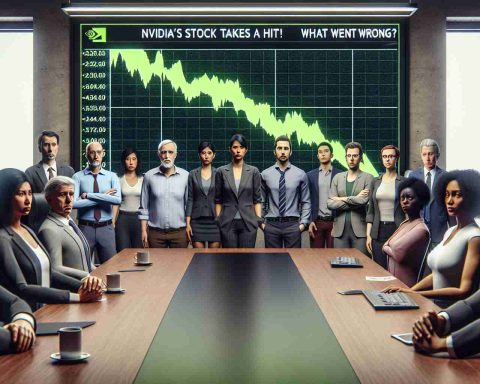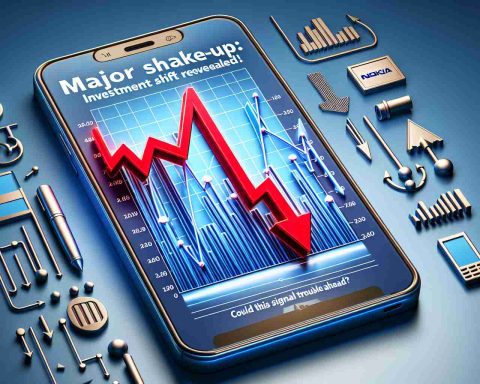Samsung Electronics is making headlines with a groundbreaking 10 trillion won ($7.2 billion) stock buyback plan, marking one of its most substantial investor-focused initiatives. The strategy is designed to enhance shareholder value amidst mounting challenges.
The repurchase will unfold over the next year, starting with Samsung acquiring approximately 3 trillion won in shares beginning Monday, with completion expected by February 2025. In this initial phase, all bought-back shares will be retired, reducing available stock. Decisions on the remaining 7 trillion won buyback strategy will be determined by the company’s board.
This major move comes as Samsung faces heightened competition, particularly in its memory chip segment, from SK Hynix. SK Hynix has become a key supplier of high-performance memory chips for Nvidia’s AI technology, raising concerns that Samsung might be losing its dominant position in the semiconductor market.
Despite a recent 8.6% increase following the buyback announcement, Samsung’s shares have declined 32% this year. The company’s stock continues to trade at over a 10% discount compared to its projected one-year forward accounting book value.
Beyond market competition, Samsung is contending with a global downturn in consumer electronics demand, further raising alarm among investors. In response, Samsung is working to qualify its latest HBM3E memory chips for Nvidia, targeting sales later this year.
Investor caution remains, with concerns over Samsung’s competitive recovery and geo-economic challenges, particularly those related to the Chinese market. While the buyback could boost immediate stock performance, Samsung’s longer-term success will hinge on its ability to overcome these hurdles.
Will Samsung’s Latest Move Fuel a Tech Renaissance or Sound the Alarm for the Industry?
In a bold attempt to capture investor interest, Samsung Electronics has announced a substantial stock buyback plan. Yet beyond this headline-grabbing maneuver lie deeper implications for the tech giant and the broader industry. What other stories lurk beneath this financial strategy?
The Global Semiconductor Struggle
Despite its colossal footprint in the tech world, Samsung is grappling with significant shifts in the semiconductor landscape. Once an unchallenged leader, the corporation is finding it increasingly hard to fend off competitors like SK Hynix, which has made substantial inroads by supplying Nvidia with high-performance memory chips. This rivalry signals a broader trend where traditional giants must constantly innovate or risk erosion of their market share.
Consumer Electronics Market Turbulence
As Samsung attempts to stabilize its position, it faces dwindling global demand for consumer electronics. This downturn has prompted worries not only for Samsung but also across the sector, suggesting that this slump may affect company profits and new product development. If the demand remains lukewarm, Samsung’s expansion plans could be under threat.
The Geo-economic Labyrinth
Samsung’s global operations are entangled in geo-economic uncertainties. The threat of restricted access to key markets like China could exacerbate supply chain issues, forcing Samsung to reconsider its strategic partnerships and production lines. These challenges echo across the international tech sector, potentially inflating costs and impacting global prices for end consumers.
Advantages and Disadvantages of Share Buybacks
On one hand, share buybacks can be a powerful tool to improve shareholder value by reducing the number of shares, thereby increasing the earnings per share. For investors, this can offer immediate benefits through enhanced returns. Additionally, buybacks can signal company confidence in its current valuation being undervalued.
Conversely, critics argue that money spent on buybacks could be better invested in research and development to fuel long-term growth and innovation. Short-term boosts to stock prices might not translate to improved business fundamentals, particularly if the external factors pressing on profit margins aren’t addressed.
Is Samsung At a Crossroads?
With these dynamics at play, many wonder: Can Samsung successfully pivot in this rapidly evolving landscape? Beyond financial maneuvers, the company’s future success must involve proactive strategies in product innovation and adaptive supply chain management.
Related Reads
To delve deeper into the evolving tech landscape and see how companies are navigating similar waters, explore these resources:
As Samsung embarks on this buyback journey, the unfolding outcomes will likely become a case study for tech companies facing similar pressures. Will this financial maneuver spearhead a renaissance for Samsung, or will it signal deeper challenges yet to be addressed? The tech world watches with bated breath.




















